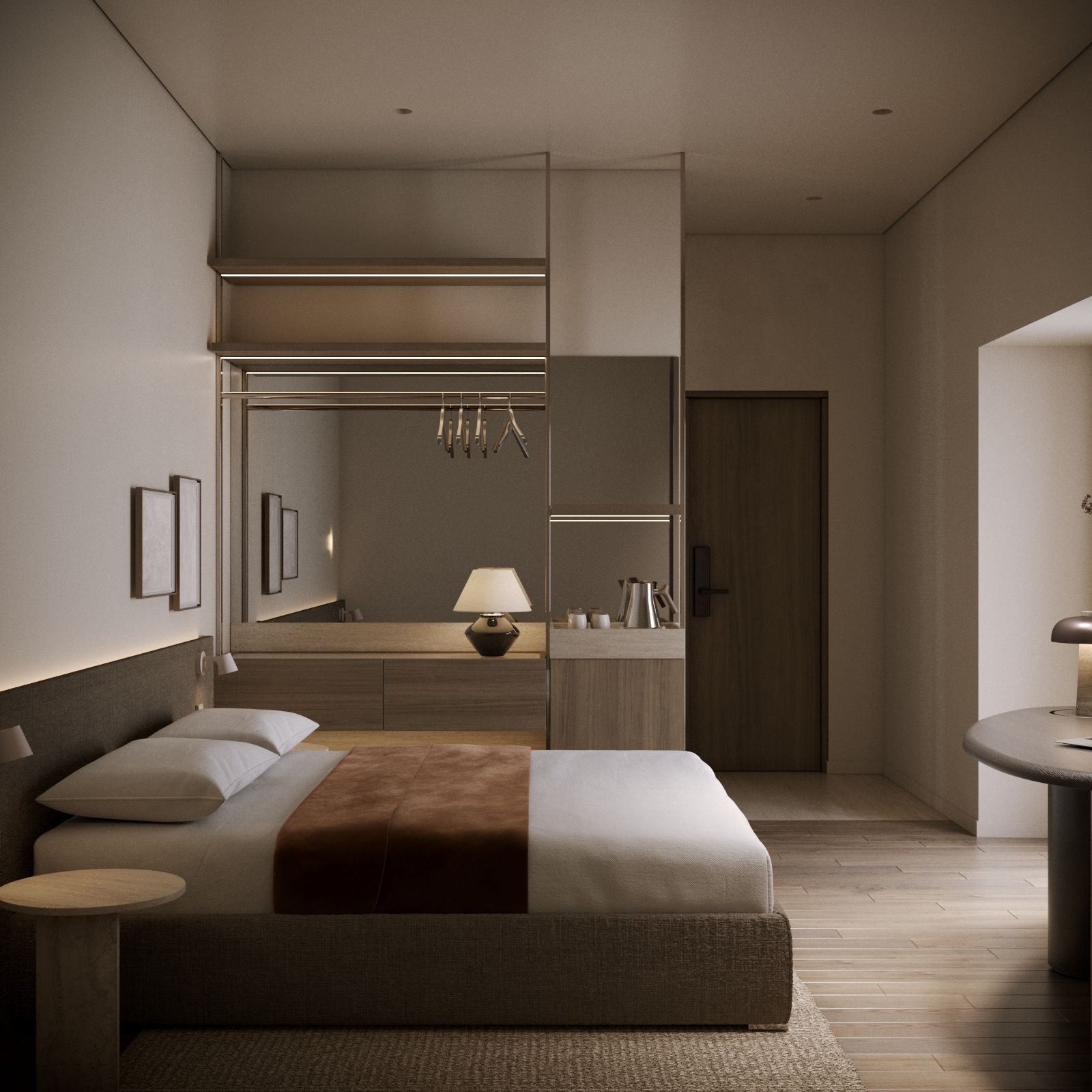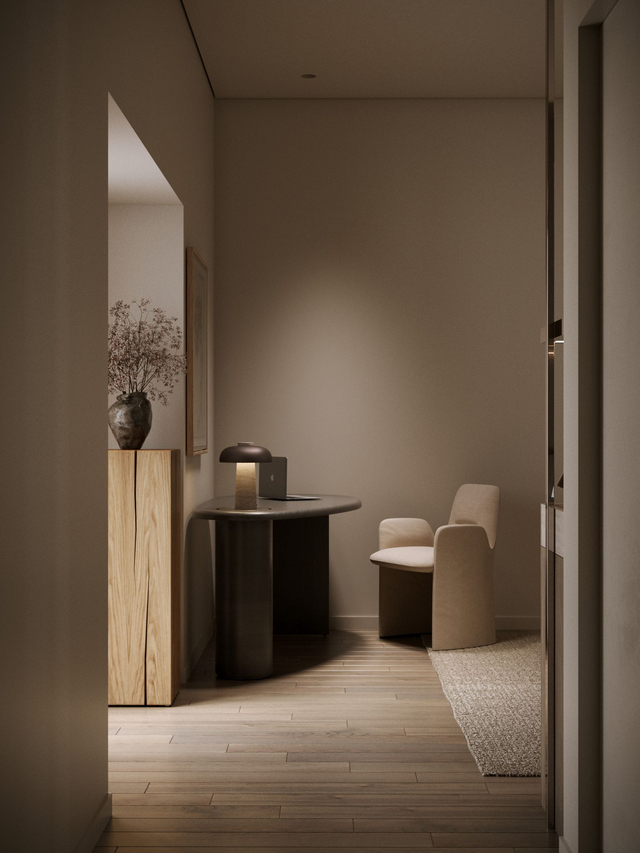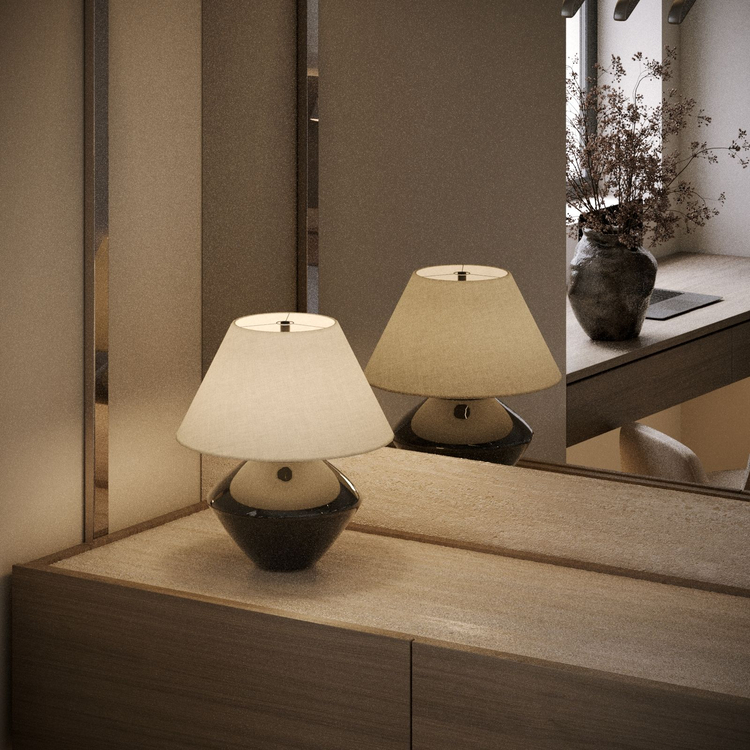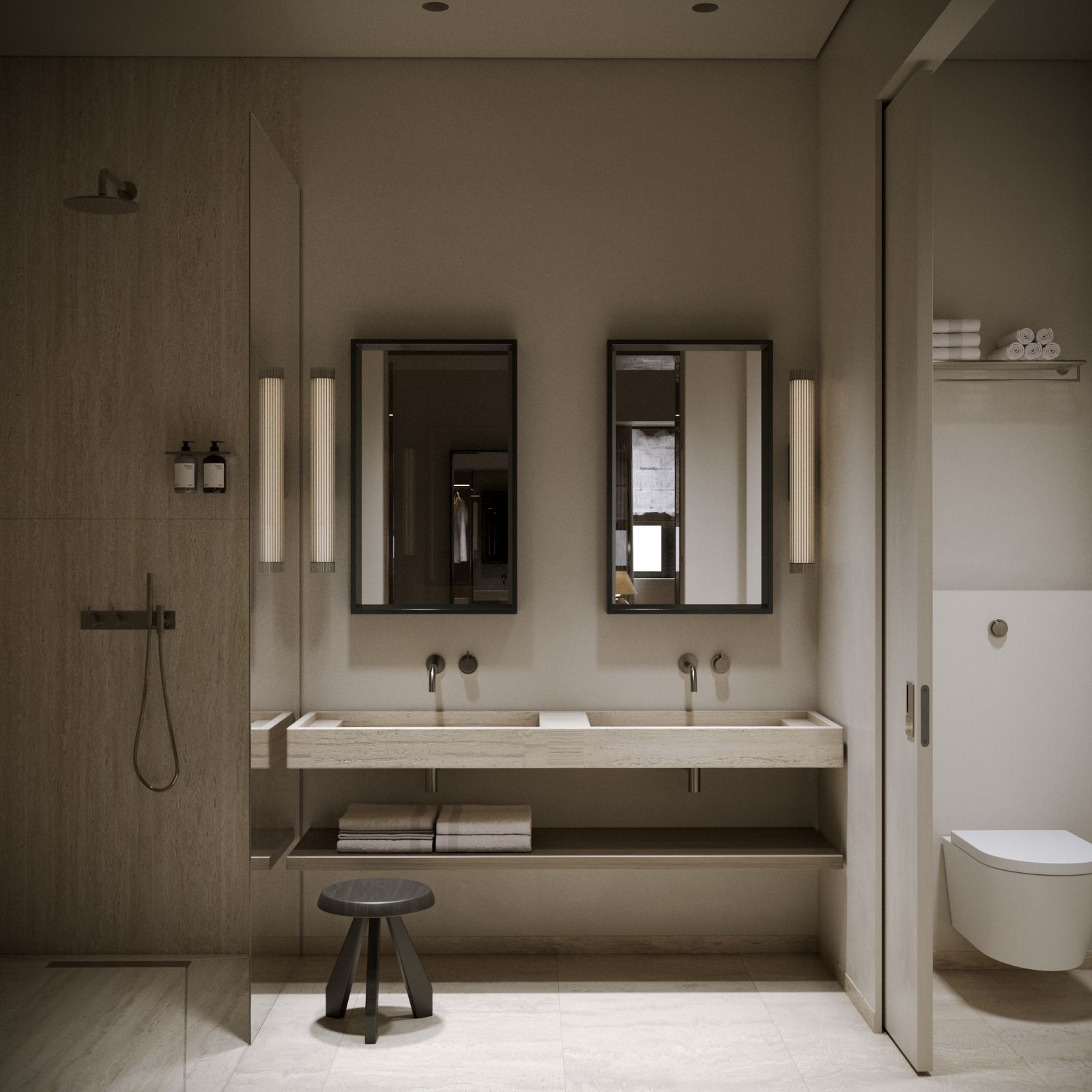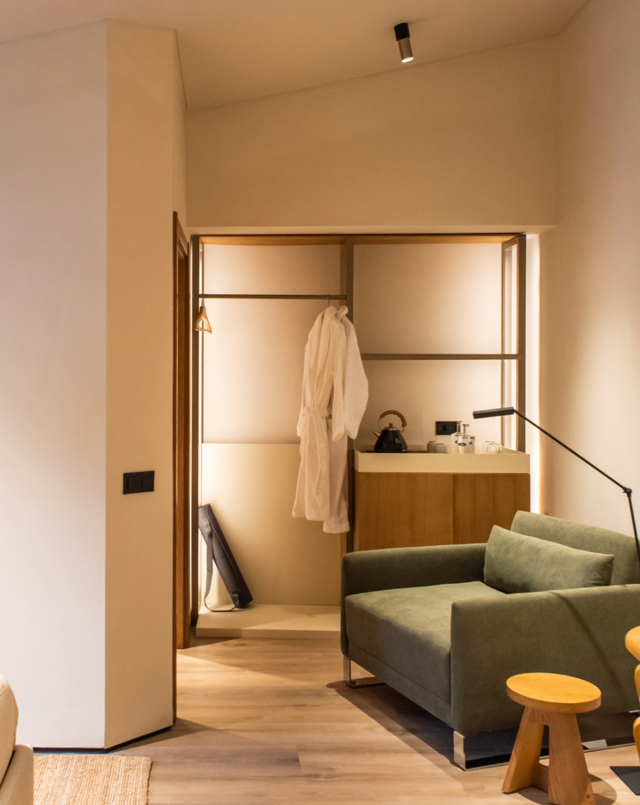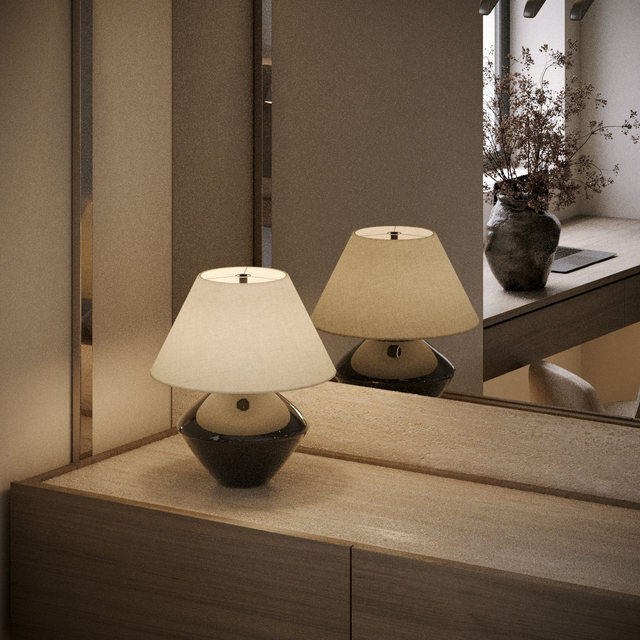DOMA
Team: Kate Turbina, Varvara Lyasnikova, Sofia Musayelova, Kuba Eraliev, Kupava Kalinnikova, Nataliia Riabtseva, Lyudmila Pavlova
Location: Lisbon, Portugal
Area: 2000 sq.m.
Project type: Hospitality design
Project year: 2025
Client: Doma.Pt
Lounge
A Journey to DOMA: A Story of Return
Let me tell you a story. You land in Lisbon, and someone is meeting you. Not just a driver — a host. On the way, the city disappears behind you, replaced by eucalyptus groves and silence. The rhythm shifts. Within half an hour, you arrive at the edge of a former farm — now reimagined as a sanctuary.
This is DOMA. A place where time slows. You’re invited for a quiet walk through the grounds. No brochures, no checklists. Just stories. Someone shares the land’s past — its textures, sounds, memories.
Inside the lobby, there’s citrus in the air. You’re welcomed with cool water and rosemary. You haven’t checked in, but you’ve already arrived.
Your room feels like it’s been waiting. A flower. A handwritten note. Linen curtains sway. Wooden furniture contrasts with frameless glass. There’s a tension between raw and refined — and in this balance, you feel completely at ease.
Working desk
Project Overview
Hotel DOMA was born from the desire to create a calm, intentional experience — grounded in quiet luxury and spiritual identity.
We worked across every key area of the hotel: Guest rooms, Corridors, Lobby and coworking, Restaurant, Terraces and bars
Our team delivered: Market research, Interior concept development, Project coordination
We worked only with Portuguese suppliers and makers, integrating traditional crafts — embroidery, tapestries, rugs, ceramics — to create a space that is regionally rooted and emotionally resonant.
Superior room
Architectural Context
DOMA merges two volumes: A historic heritage building and A contemporary extension
The challenge: to create one unified atmosphere. Instead of contrast, we sought continuity — using spatial rhythm, emotional flow, and material harmony.
The heritage wing preserves its original proportions and character. The new structure introduces lightness, openness, and intentional minimalism. Together, they express respectful layering — memory and modernity in quiet conversation.
Details
Guest Experience & Emotional Flow
Each suite is a private sanctuary, defined by: Warm neutral tones (a), Natural textures and materials (b), Subtle functional zoning (c ), Gentle lighting (d).
The design invites guests into a mood — of slowness, comfort, and inner presence. Nothing is overdone. Everything is considered.
Cultural Identity
This is not folklore — it’s contemporary heritage. We wove Lisbon’s traditions into modern forms: Regional crafts and materials (1), Subtle nods to Portuguese architecture (2) and Timeless palettes, shapes, and silhouettes (3).
The result is culturally grounded design without clichés — interiors that are honest, local, and quietly luxurious.
Sensory & Emotional Design
Design isn’t just visual — it’s felt. We shaped: Layered lighting to define rhythm, Soft natural palette for the quiet, Natural fabrics and touchable surfaces. Every detail invites presence, reflection, and emotional memory.
Twin room
How We Created the Experience
Step 1: Understanding the Site The site was a brownfield — layered with history. We didn’t impose. We listened. Light, terrain, and silence became our guides.
Step 2: Aligning the Vision We interviewed founders to align business strategy, guest desires, spatial possibilities, and hospitality trends. This gave the project its DNA.
Step 3: Designing Scenarios We envisioned days in the life of the guest. What happens at 8AM, 4PM, midnight? What’s the emotional journey? What rituals unfold? This defined the spatial flow.
Step 4: Building the White Box We created a flexible, intuitive layout — free from finishes — where structure supports feeling, not just function.
Step 5: Exploring Culture We researched colors, materials, and gestures unique to Lisbon and Portugal. From limewash walls to handwoven rugs, each element carries place-based meaning.
Step 6: Reflecting the Brand DOMA stands for serenity, presence, restoration. We translated these values into every spatial gesture — zoning, tactility, rhythm.
Step 7: Defining Positioning We studied the local and global landscape to ask: What’s missing? DOMA answered with emotional clarity and human scale — a counterpoint to overstimulated hospitality.
Step 8: Co-Creation We didn’t deliver a design — we built a process Collaborating with the founders, we tuned every detail with empathy and alignment.
Bathroom
The Role of Light in design
In my design practice, light plays an almost mystical role. My inspiration comes from nature’s theatre — the light that filters through forest leaves, the golden clarity before sunset, the glow of firelight. These elemental experiences evoke a deep sense of presence, and I strive to translate that emotion into built form.
I believe that good lighting doesn’t just make a space — it makes the moment. It allows us to feel like creators, not just observers. It opens something quiet and essential in us.
Trends in Hospitality Design
DOMA was shaped by key shifts in the industry:
Hyper-Personalization From scent to spatial rhythm, every moment reflects the guest’s individuality.
Quiet Luxury No gold. No gloss. Just honest materials and invisible comfort.
Cultural Minimalism A modern aesthetic deeply rooted in local context.
Hybrid Functionality DOMA is not just for sleep — it supports co-working, social pauses, and inner retreat.
Sustainable Stillness Fewer objects. Better materials. Long-term calm.
Wardrobe
Brownfield: A Place with a Past
This wasn’t a blank slate — it was a revival. The site carried history and structure. Rather than erase, we restored.
Why brownfield? Because design is about respecting what came before — and gently guiding it into the future.
DOMA is a return — To nature. To rhythm. To what matters.
I design hospitality spaces that invite, inspire, and leave a lasting impression. If you're building a hotel, café, or restaurant that tells a story, evokes emotion, and makes guests want to return — let’s create it together. Visit www.kateturbina.works or email [email protected] to start the conversation.
Enjoy!
Architecture, design, management.
info@kateturbina.works
www.kateturbina.works Praça Marquês de Pombal 14, 1250-162 Lisboa
kateturbina.works © 2018–2025


